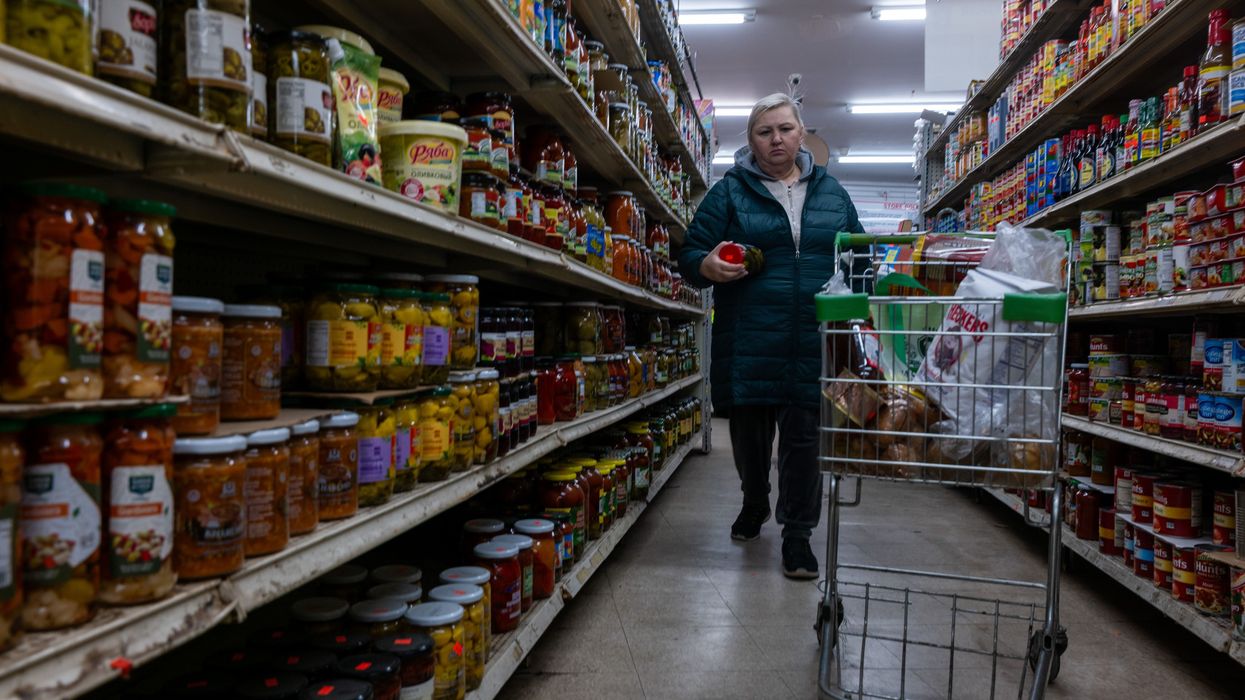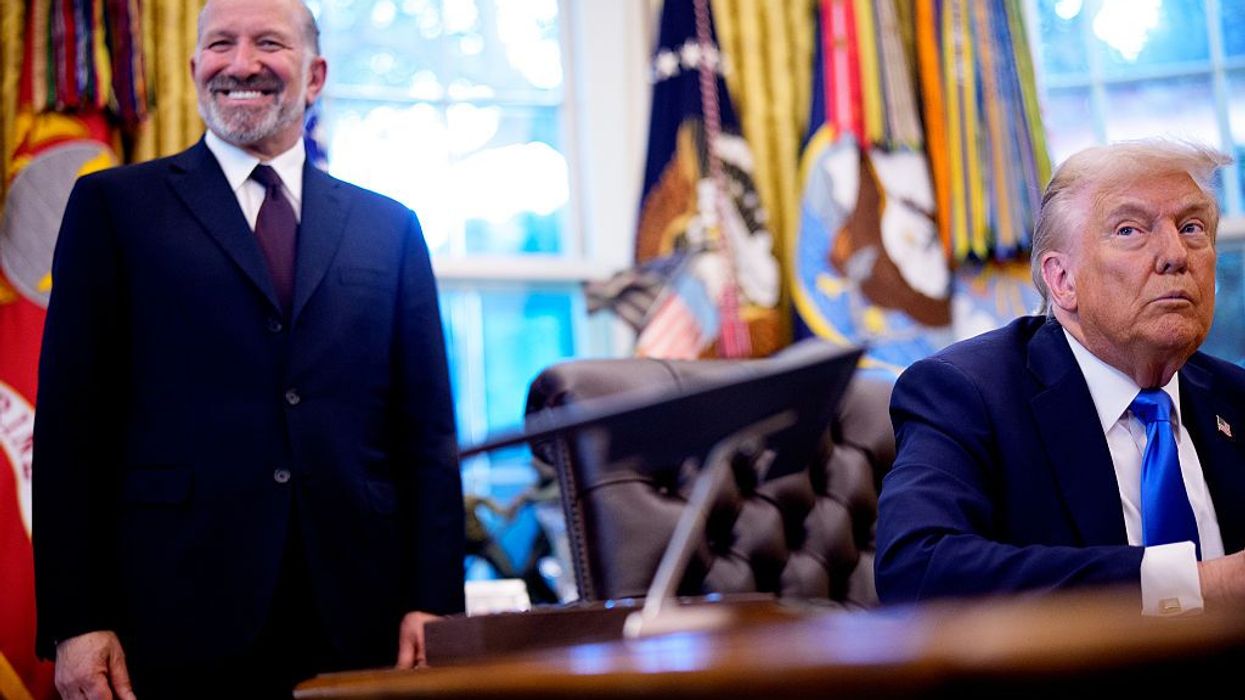"A-plus," said the president without hesitating. "A-plus-plus-plus-plus-plus."
He spoke to Burns the same day he addressed Pennsylvania voters at a rally where he was flanked by large signs reading, "Lower Prices" and "Bigger Paychecks." Burns pointed out that she had spoken to one woman in Pennsylvania who identified herself as a Trump supporter who "loves" the president.
"Here’s what she said about the economy. She said, 'Groceries, utility, insurance, and the basic cost of running [a] small business keep rising faster than wages,'" said Burns. "She also says that not enough is being done. Mr. President, this is one of your supporters."
On social media, US Sen. Bernie Sanders (I-Vt.) chimed in, cataloging a number of features of the economy Trump is overseeing, including the rising rate of homelessness and food prices.
"God help us when we have a B-plus-plus-plus-plus-plus economy," said the senator, a frequent critic of Trump and economic inequality.
At the event in Mount Pocono, Pennsylvania, as in his interview with Burns, Trump said he "inherited a mess" from former President Joe Biden—a frequent claim that economists have vehemently refuted this year as grocery prices and household electricity bills have gone up, the latter fueled partially by the artificial intelligence data centers whose expansion Trump is demanding in communities across the country.
While centering the tour on affordability, Trump also called the concept a "hoax" that's been perpetrated by Democrats like New York City Mayor-elect Zohran Mamdani, who focused heavily on making the city more livable for working people by reducing costs.
"They use the word affordability. And that’s the only word they say. Affordability. And that’s their only word. They say, ‘Affordability.’ And everyone says, ‘Oh, that must mean Trump has high prices.’ No. Our prices are coming down tremendously from the highest prices in the history of our country," the president said.
The Trump administration didn't release the November Consumer Price Index as scheduled last month, but previous releases this year have shown price increases for groceries. Democratic lawmakers on the Joint Economic Committee in November found that American households are spending roughly $700 more each month to pay for essential items, and as Common Dreams reported in August, large retailers are using the president's tariffs on countries including Brazil, Mexico, and Canada to pass higher costs onto customers, who are being asked to pay as much as 40% more for some groceries at major stores like Walmart.
Along with dismissing the idea that affordability is an issue for Americans at the event in Pennsylvania, the president sought to blame working people for their perception that tariffs have helped make life too expensive—repeating an earlier suggestion that the US doesn't need to import certain goods.
“You know, you can give up certain products. You can give up pencils... You don’t need 37 dolls for your daughter,” Trump said. “Two or three is nice, but you don’t need 37 dolls. So, we’re doing things right. We’re running this country right well.”
While haranguing families about needing to do without, emphasized Media Matters for America senior fellow Matthew Gertz, the president's own wealth has grown by $3 billion in the past year "thanks to various corrupt schemes" such as his investment in cryptocurrency.
Despite his new focus on affordability, wrote economist Paul Krugman, Trump's set out on the first stop of his tour with the apparent aim of continuing to "gaslight the public" into believing any financial struggles they're having are they're own fault—with some blame to be shared by immigrants and Democratic lawmakers.
"The problem can’t possibly lie with him—so it must lie with you. 'The American people don’t know how good they have it,'" wrote Krugman, quoting a recent speech given by Treasury Secretary Scott Bessent.
But despite the president's deflections, Krugman wrote, the facts don't support the notion that Trump has delivered on his campaign promise to bring down consumer prices starting on "day one" of his second term.
"We’re now 11 months in, prices are still rising, and voters who believed him feel, with reason, that they were lied to," wrote Krugman. "Last night Trump insisted that prices are, in fact, coming way down. Again, 'Who you gonna believe, me or your lying eyes?' is a self-destructive political strategy."
Krugman continued:
Trump would be in much better political shape right now if he had basically continued Biden’s policies, with only a few cosmetic changes. When he took office inflation was on a declining trajectory. Consumer sentiment was relatively favorable at the start of 2025. Americans were still angry about high prices, but the inflation surge of 2021-3 had happened on Biden’s watch and was receding into the past...
Instead, he brought chaos: Massive and massively unpopular tariffs, DOGE disruptions, masked ICE agents grabbing people off the street, saber-rattling and war crimes in the Caribbean. Many swing voters, I believe, supported Trump out of nostalgia for the relative calm that prevailed before Covid struck. They didn’t think they were voting for nonstop political PTSD.
And there’s more to come. Health insurance costs are about to spike, because Republicans refuse to extend Biden-era subsidies. Inflation may pick up in the next few months as retailers, who have so far absorbed much of the cost of Trump’s tariffs, begin passing them on to consumers.
So the “affordability tour” is off to a disastrous start. And it won’t get better, because while Trump insists that the problem is you, it’s actually him. And he isn’t going to change.
While Trump hammers home his claim that the economy is working for Americans, polls continue to show that households are basing their negative outlook on the matter on their lived experience. Nearly half of those polled by Politico and Public First in a survey released Wednesday said they are finding groceries, utilities, healthcare, housing, and transportation difficult to afford, and 55% of respondents said they blame the Trump administration for rising costs.
Twenty-seven percent of people said they have skipped a medical appointment in the last two years due to high costs, and 23% said they had rationed prescription doses to save money. Half of those surveyed are having difficulty paying for food.
Trump's self-described "A-plus-plus-plus-plus-plus" economy is also forcing people to forgo travel and leisure activities, with 37% of people saying they wouldn't be able to afford tickets to a sports event with family or friends and nearly half saying they couldn't pay for air travel.
Rep. Pramila Jayapal (D-Wash.) said that as Americans struggle with the impact of Trump's tariffs and other policies that have prioritized corporate profits over the needs of working families, the president's response was to deliver a speech "full of NOTHING."
"No new policies. No new benefits for families," said Jayapal. "Just telling people that everything is amazing when we can see with our own two eyes that it’s not. It’s a complete betrayal of the American people."


